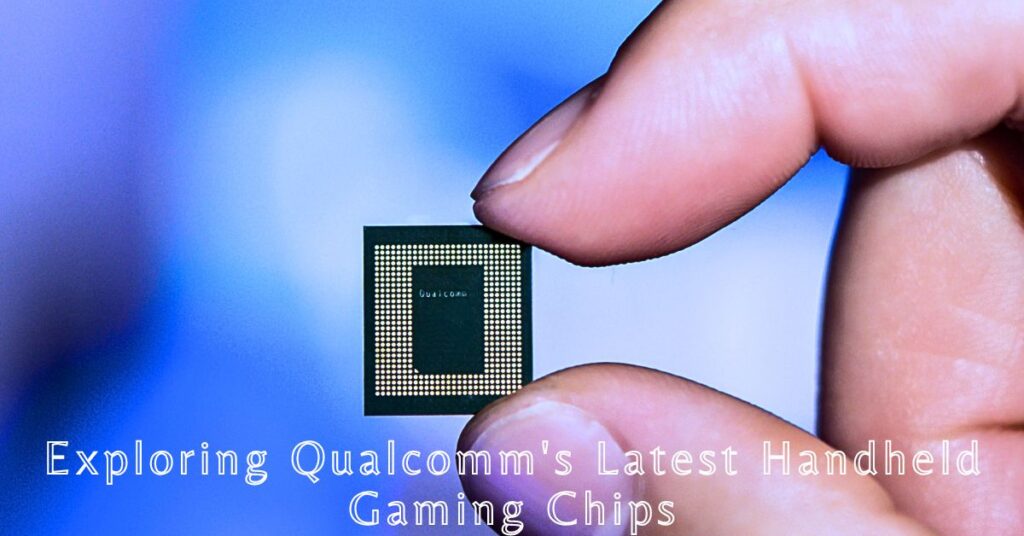In the world of tech, Qualcomm is a name that resonates beyond just smartphones. They’re stepping up their game by powering not only Android phones but also some of the coolest gaming handhelds out there. And the reason is simple: these Snapdragon chips are packing enough punch for serious gaming. But Qualcomm isn’t stopping there – they’ve got their eyes on the sizzling handheld gaming market, which includes heavyweights like the Valve Steam Deck and the Nintendo Switch. It’s like a revival of a forgotten era since the Sony PSP days.
And guess what? Qualcomm isn’t just talking; they’re walking the talk. They’ve just unveiled three brand-new chips custom-built for handheld gaming. Picture this scene: Gamescom in Cologne, Germany – the stage is set for a gaming revolution.
Qualcom new chipset price and features:
Meet the Snapdragon G Series: G1, G2, and G3x Gen 2 SoCs. The G1 is all about snag-free game streaming, whether it’s from your device or the cloud. You know what’s cool? This chip is designed to keep you playing for more than 10 hours on Wi-Fi. Word on the street is that devices with the G1 could hit the market for less than $200. And no, that’s not some deal with a catch – that’s the real deal.
Now, zoom in on the G2 chip. This one is like the superhero of mobile and cloud gaming, coming with an extra boost from 5G and Wi-Fi 6/6E support. It’s not just about power; it’s about the smart tech behind it. Think Kryo octa-core CPU and a turbocharged Adreno A21 GPU, all optimized for gaming on the move. But hold on, because here comes the star of the show – the G3x Gen 2. This chip isn’t just aiming for the stars; it’s going straight for the gaming legends like AMD’s Aerith SoC that’s the backbone of the Steam Deck. Qualcomm didn’t hold back – they cranked up the Kryo octa-core CPU’s performance by a whopping 30%, all without going haywire on power (we’re talking 15-18 watts ballpark). Plus, they listened to the gamers and juiced up the Adreno A32 GPU, making it twice as fast. Fancy stuff like ray tracing? Yep, it’s in there. And let’s not forget the cherry on top – Wi-Fi 7 and PCIe Gen 4 SSD support that you’d expect on a full-blown PC.
Imagine awakening in a hospital where the smell of death is pervasive. Your quest in The Walking Dead: Destinies starts right there:
But wait, there’s a twist. These specs might not go toe-to-toe with the top-tier game consoles just yet. Why? Well, Qualcomm spilled the beans – they could have pushed the pedal to the metal and blown the competition away, but it would’ve left the battery gasping for air. It’s a dance between power and practicality, and Qualcomm is strutting its stuff on that dance floor. Here’s the thing: even though the G3x Gen 2 is packing a punch, it didn’t quite have The Verge dancing in awe when they tested it on an Android-based reference design console. The hardware is there, with a dazzling 6.8-inch 144Hz OLED display, but the gaming performance didn’t hit the bullseye. Why? Turns out, most Android games today are tailored for smartphone chips, not these gaming juggernauts. Plus, some games like PUBG: Mobile didn’t even bother shaking hands with external controllers.
But Qualcomm isn’t limiting the fun to Android and Windows. Big shots in the console-making world – AyaNeo, Huaqin, Inventec, and Thundercomm – are already in line to roll out devices with the G3x Gen 2. Qualcomm’s big bet? Breaking free from the gaming phone arena and inviting gamers into a world of handheld gaming wonders, each with its own unique price tag.
In this tale of tech and gaming dreams, Qualcomm’s Snapdragon G Series emerges as the protagonist, ready to rewrite the rules and spin a brand-new chapter in handheld gaming. Get ready – the future of gaming is about to fit snugly in the palm of your hand.

